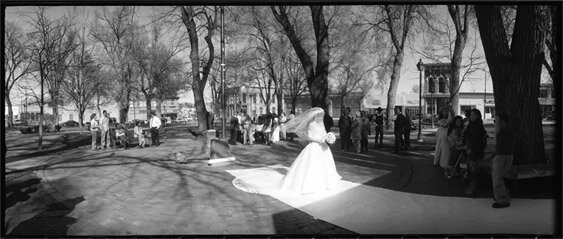 |
|
|---|---|
|
|
|
__Las Vegas Grandes the Spanish called it, the Big Meadows. The place where the snow-chilled Rio Gallinas—named for its wild turkeys—formed unbelievably broad pastures as it broke out from the southern Rockies and on to the Great Plains. An alluring place, in an arid land. __This fortified Mexican colonial plaza, planted west of the river in 1835, grew into a leading Santa Fe Trail trade center. Then, after the railroad arrived in 1879, a competing Anglo town arose east of the river, and Las Vegas grew larger than Santa Fe, almost larger than Albuquerque. Yet, after its economy stalled following World War I, little new was built, but little was torn down. This left La Vegas with more historic buildings than any comparable Southwestern town—the tangible evidence of the meeting of the eastward-moving Mexican and westward-moving American frontiers. __Although the Spanish Laws of the Indies and the subsequent Mexican Law of Colonization called for the plaza to be oriented to the points of the compass, the alcalde who laid out the town oriented the rectangular plaza perpendicular to the river, in a southwest to northeast orientation. In effect, he reserved one long agricultural field for community purposes, with a public right of way leading southwest from the river up to the plaza, then to the church on the high side of the plaza. Located as it was on the high, narrow, western end of the plaza, the church dominated the village until it was replaced by a new one, erected one block to the west in 1869. __Each pioneer family erected a one-room-deep, flat-roofed adobe house, organized together to form a defensive plaza—today a rectangle roughly 320 by 470 feet. Following the coming of the railroad, these gave way to two- and three-story Italianate business blocks. __The economy stalled after the First World War, and very little new was built. In the late 1970s, however, native and newcomer historic preservationists began renovating the plaza park and the surrounding classic historic buildings. Further Reading (in addition to The Plazas of New Mexico)
External Links
|


